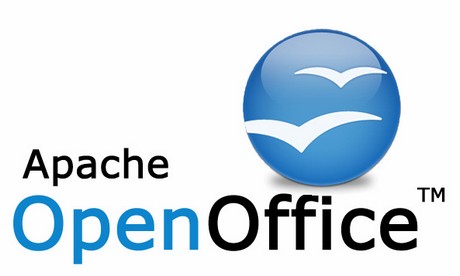When it comes to choosing system, data and marketing tools for your business, start with “the framework approach” but don’t be surprised if you decide a custom system is a better fit for you! We’re talking CRM (Customer Relationship Management), MA (Marketing Automation), CMS (Content Management System), ERP (Enterprise Resource Planning), or BIT (Business Intelligence Tools).
Some of the best web development practices you may read about might be a great fit for your company or they might not. It’s always a good idea to take “the framework approach” towards your business first. After all, your company isn’t that unique, right? So, if your company has needs for tools that can help it function more effectively and automate your processes, it’s pretty likely there are solutions out there you can then adapt and tailor to your company.
But not so fast. Looking at the price tag of some of these systems that cost well over $100k to license and even more in costs of time and labor to implement, you have to weigh this and compare what you get in return. How are you going to migrate your legacy data to this new system? Who is going to maintain all of its moving parts once your high-priced consultant leaves?
You may have the best web developers but that’s not guaranteeing your company will transition smoothly to a new system and platform. Your web developers are only human, I mean, even the most senior web developers are senior in only certain areas, but they’re always still junior in others. I’m senior level in PHP, MySQL, WordPress, Symfony and Javascript/JQuery, but I’m not so senior in Magento and Drupal. Besides my own personal projects and exercises to keep learning and stay fresh, I have been out of the heavy ecommerce side for almost 4 years now.
You may find out that your perfectly capable web development team likely never had experience integrating Salesforce, Marketo or other heavy data-driven platforms into a business, so that will be another challenge, especially if you’re a small company that can’t afford to stretch its resources to have part of your web development team working exclusively on this type of project when you still need execution for the daily grind development activities that will continue to keep your lights on!
Legacy Attitudes
We haven’t even addressed the most important question: How are you going to migrate your people to this new system? Your company may have some of the best web developers on staff but they might not be the most talented and skilled with your people. So, how are you going to deal with this change? You may find it’s too much change for people, you may also discover opportunities to automate processes that were performed manually before that would enable you to let’s say deprecate certain positions?
If you are optimizing your business and you are making your workforce more efficient, that is quite a business achievement. Imagine if you could shift two full-time salaried positions out of, say accounting and invest more in good web talent or other people with newer skills and experience more tailored towards the technology-driven horizon you are taking your company.
Custom Systems
A lot of the heavy lifting of some of these enterprise tools aren’t that sophisticated, complex, or magical. Having built out a few custom ERPs for retailers and factories, I can say that compared to the packages they were considering with price tags over $500,000, that’s a lot of technology talent they could buy for a few years with super custom, tailor made, yet still scalable solutions built right in with technical support.
The first reason they decide to go customized is the price tag, the uncertainty of success, and the potential future costs of ridiculously expensive upgrades and support contracts to off-shore call centers later. The reason many smaller companies go the custom route is they trust their web team more than these slick “enterprise solutions” salespeople coming in with their big price tags not understanding the company’s intricacies, culture and existing systems that work fine. They want to come in and burn the house down and start completely from their foundation of understanding, what a waste. They want to redo everything their way and it’s difficult to pick and choose with cafeteria-style options to only buy what a small business needs because there’s a disconnect between the small business’s understanding of what these tools are capable of and these business tool sales and support people not understanding what the business actually needs. You may get to this point in weighing your options and finally just say the hell with it.
So discussions go away, management just deals with the confines of an inadequate, dysfunctional system, and HR pays three extra people to enter information from one print-out into a screen so the same data goes into another. All in the name of “keeping the peace” and not upsetting the apple cart.
Well, in my experience of helping companies, large and small – national retail chains and small manufacturers, I’ve seen the sense of helplessness in looking for “the right tools”. Usually, the solution is pretty close at hand. Often, the POS and other data systems are already collecting data into an accessible database. If your company collects data and you can see reports somewhere, you may be 90% at a solution to help you automate perhaps up to 80% of your systems and processes that are achievable without buying expensive ERP and other “enterprise” solutions. All you need is a knowledgeable and creative-minded web developer or programmer to outline your biggest priorities and system gaps and identify solutions that could be built all with NO EXTRA COSTS except what you pay the developer AND YOU WILL OWN THE CODE AND THE SOLUTION for eternity.
Yes, that all sounds good, but how do you solve your business systems dilemma? Trusted people with this experience can guide you through the process. We can create a plan to help you prioritize your company’s own tailored ERP based on open source that runs right on your company’s secure intranet as a one-stop shop for all your company data and reporting, organized by department and restricted access by user roles and privileges.
All code, programming, logic and database design and setup are scalable and future-proof. You may choose to go with a custom solution but you can still make sure your web team adapts a common development foundation, at least choose an MVC pattern and structure or go an actual PHP framework like the Symfony framework along with other options that will enable your current web development team to quickly integrate, familiarize and be productive contributors to your future proof, scalable custom ERP solution.
If you are a business looking for guidance for choosing the proper direction for a CRM, MA (Marketing Automation), ERP, CMS or you’re just swimming in this stew of acronyms and are getting confused, contact me to arrange a Business Tools Assessment by clicking here. We know what questions to ask you to help present to you the pros, cons, strengths and weaknesses of going in the myriad of directions. We’re your SME (Subject Matter Expert) for all things business management tools — I couldn’t resist to throw in one more acronym in there.
If you’re looking to go alone on a shoestring budget and even free solutions, I suggest looking into Odoo, the community edition is packed full of many features and Mautic, a robust open-source marketing automation tool.

